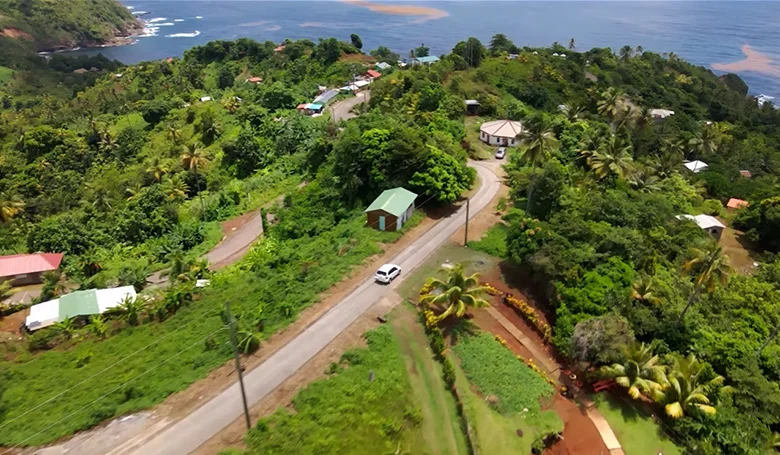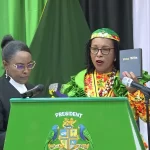Kalinago Territory Act

The Kalinago Territory Act is an essential legal document that governs the management and preservation of the Kalinago Territory, a 3,700-acre area on Dominica’s northeast in Saint David Parish. The act outlines the rights and responsibilities of the Kalinago people and defines the boundaries of their territory, which stretches from the Mahaut River to the Sineku River. This law, first known as the Carib Reserve Act in 1903, was reaffirmed in 1978 during Dominica’s transition to independence. The Act has been critical in preserving the Kalinago people’s land rights, culture, and sovereignty.
Historical Context of the Kalinago Territory Act
The Carib Reserve Act of 1903 was enacted during the British colonial period. It was initially a way to legally define the land designated for the Kalinago people after years of European encroachment on their ancestral lands. This Act set the boundaries of what was then known as the Carib Reserve, providing the Kalinago people with communal ownership of the land. However, as part of Dominica’s shift towards independence, the law was amended and renamed the Kalinago Territory Act in 1978. The 1978 Act reaffirmed the boundaries of the territory and introduced additional measures to protect the Kalinago’s land rights and cultural heritage.
Over time, the Kalinago people sought to remove the colonial terminology associated with their land and identity. In 2015, the Dominica government, in response to requests from the Kalinago community, officially changed the name of the area from Carib Reserve to Kalinago Territory, reflecting the indigenous people’s true name and distancing the region from the negative connotations of the term “Carib,” which was used by European colonizers.
Boundaries and Important Landmarks
The Kalinago Territory spans over 3,700 acres, and the Kalinago Territory Act outlines the boundaries, running between the Mahaut River and the Sineku River. Hamlets within the territory include Salybia, the region’s administrative centre, and Bataka, Cray Fish River, St. Cyr, Gaulette River, Mahaut River, Sineku, and Concord. These areas are integral to the Kalinago people’s daily lives and cultural practices.
In addition to the rivers that form natural boundaries, the territory’s landscape is dotted with areas of ecological significance. The Kalinago people have traditionally used this land for farming, hunting, and fishing, adhering to communal ownership practices in the Act.
Governance Under the Kalinago Territory Act
A unique aspect of the Kalinago Territory Act is the Kalinago Council’s establishment and the Kalinago Chief’s position. These institutions were created to manage the territory and oversee land use, cultural preservation, and other governance matters. The Kalinago Chief serves as a cultural and political leader, representing the Kalinago people in dealings with the Dominican government and other external bodies.
The Act strictly prohibits the sale of land to non-Kalinago individuals, ensuring that the land remains in the collective ownership of the community. Instead of private ownership, the territory operates under a system of usufruct rights, where land can be claimed and used by individuals or families but cannot be sold. This system allows for land management continuity, helping preserve the territory’s communal integrity. Land left unused for over a year can be reallocated by the Kalinago Council, ensuring the land remains productive and well-maintained.
The Kalinago Council and the Kalinago Chief decide how land is used for economic development, housing, and agricultural activities. This structure allows for local governance that reflects the cultural values of the Kalinago people and enables them to maintain control over their affairs.
Cultural Preservation and Sovereignty
The Kalinago Territory Act is instrumental in preserving Kalinago culture and heritage. The Act ensures that the Kalinago people maintain a solid connection to their ancestral lands through its land management provisions and communal governance structure. This legal protection has enabled the community to continue practising traditional activities such as basket weaving, fishing, and canoe building, which are critical elements of Kalinago culture.
In addition to providing a legal framework for land management, the Act has broader cultural implications. By preventing the commercialization of Kalinago land and ensuring that it remains under the community’s control, the Kalinago Territory Act has helped foster a renewed sense of pride in Kalinago’s identity. Since the Act’s amendment in 1978, there has been an increased focus on celebrating and preserving Kalinago traditions, ensuring that future generations can carry on their cultural heritage.
The Kalinago Territory is also an important site for cultural tourism, which provides economic opportunities for the Kalinago people while showcasing their unique way of life to visitors. Projects like the Touna Kalinago Heritage Village, Karina Cultural Village and Kalinago Barana Autê promote sustainable tourism, allowing the Kalinago to share their history, culture, and traditional crafts with visitors to benefit the community economically and culturally.
Modern Challenges and Support
Despite the protections afforded by the Kalinago Territory Act, the Kalinago people have faced ongoing challenges, including poverty, limited access to resources, and environmental degradation. Historically, the Kalinago Territory has been one of the poorest regions in Dominica, with limited infrastructure and economic opportunities. In recent years, however, the Kalinago have received material, financial, and ideological support from foreign governments and international organizations, including the United Nations and the Caribbean Organization of Indigenous Peoples. These partnerships have helped address some of the community’s socio-economic challenges and have supported efforts to maintain the Kalinago’s cultural heritage.
Protecting the Kalinago Legacy
The Kalinago Territory Act remains a cornerstone of Kalinago land management, cultural preservation, and governance. It reflects the deep connection between the Kalinago people and their ancestral lands, providing a framework for local governance and community-led development. Through the Kalinago Council and the leadership of the Kalinago Chief, the Act ensures that the Kalinago people maintain control over their land and cultural practices, enabling them to preserve their identity in a rapidly changing world.




